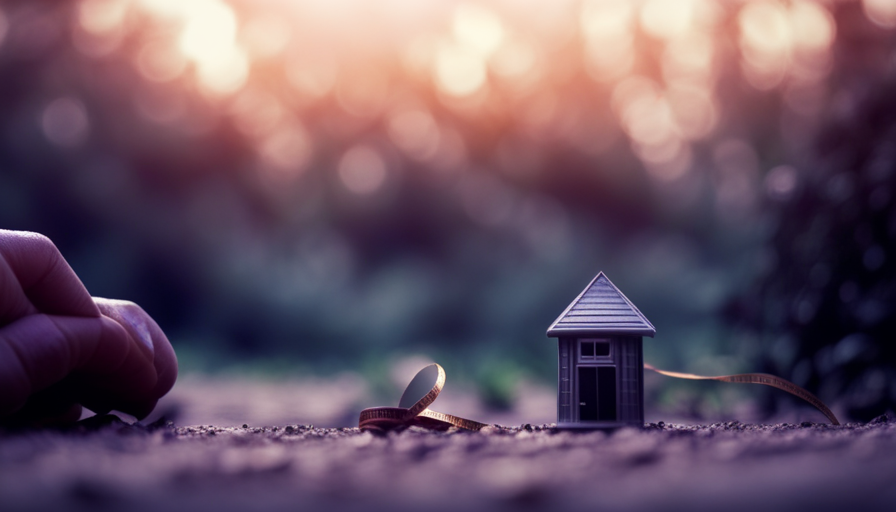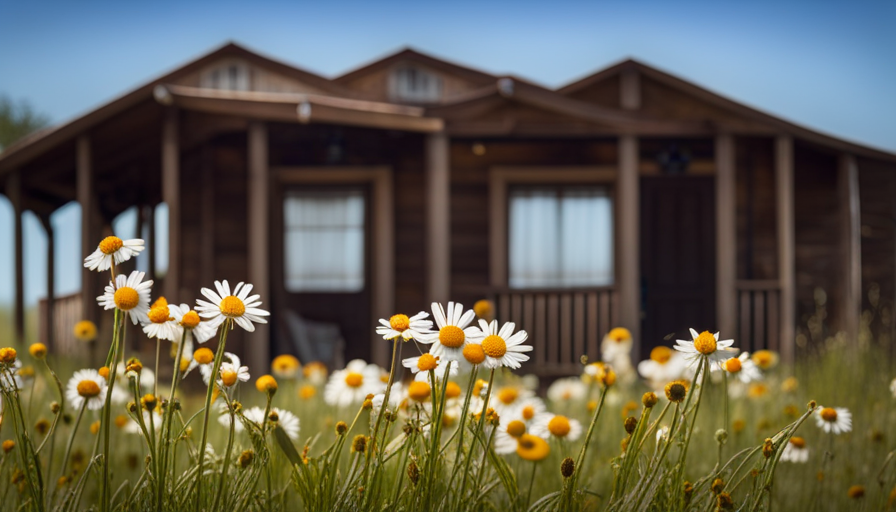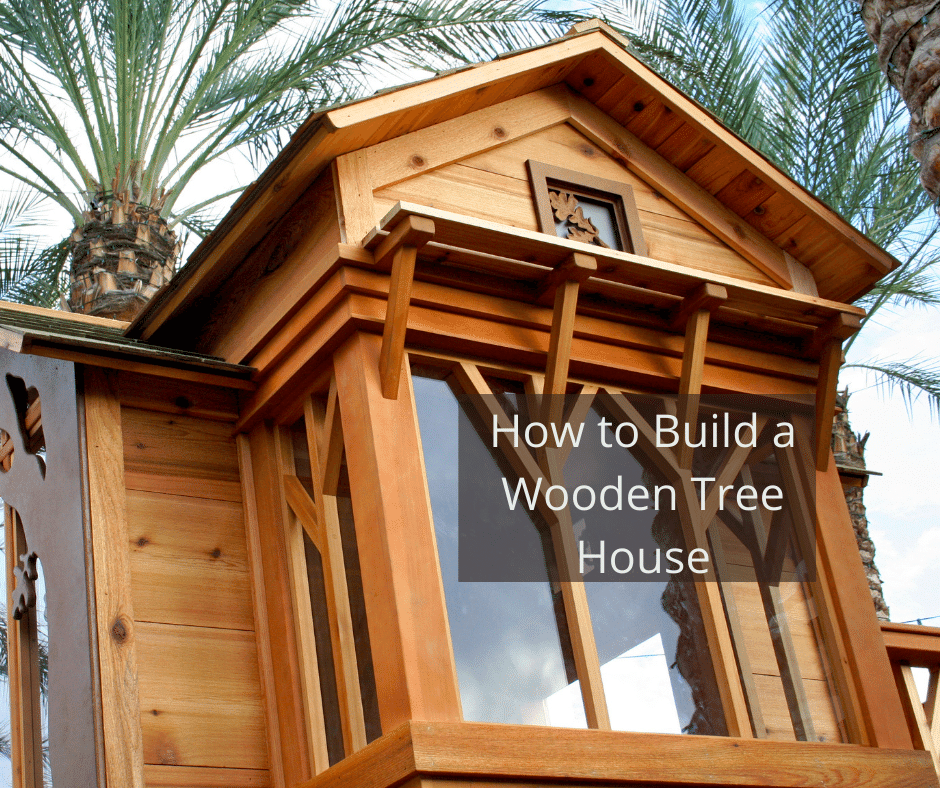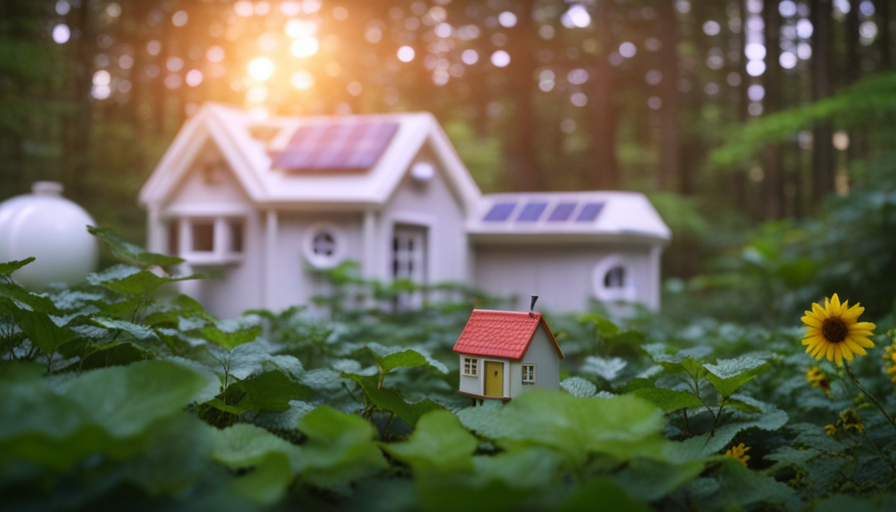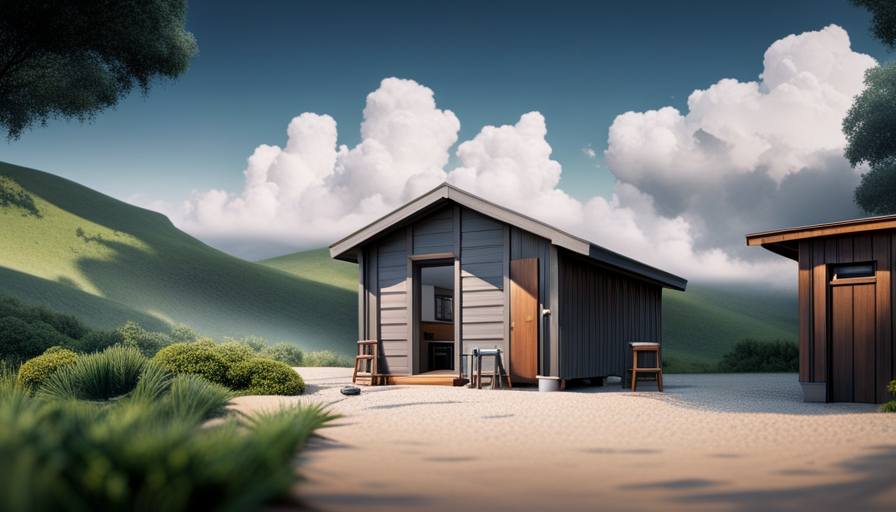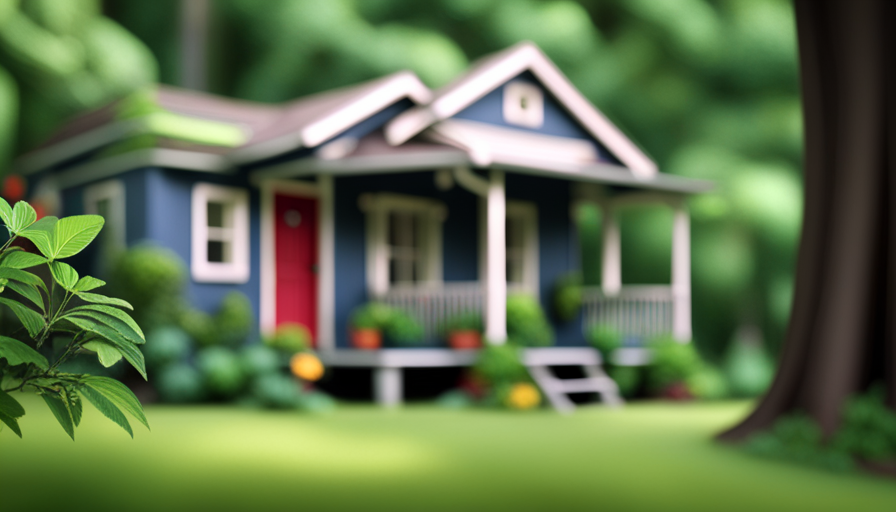Have you ever wondered about the maximum length of a tiny house? Let me provide an example to clarify this.
Imagine a cozy, yet compact, dwelling measuring only 200 square feet. Now picture another tiny house that stretches to a whopping 400 square feet! Quite a difference, isn’t it?
In this article, we will explore the fascinating world of tiny houses and delve into the question: ‘How many feet long is a tiny house?’
Tiny houses have gained immense popularity in recent years due to their minimalistic lifestyle appeal and affordability. These pint-sized dwellings come in various sizes, ranging from as little as 100 square feet up to around 400 square feet. However, when it comes to determining the length of a tiny house, there are several factors at play.
Join me as we uncover the maximum lengths of tiny houses, discover what influences their size restrictions, explore real-life examples of longer tiny houses, and discuss whether opting for a longer model might be the right choice for you.
Get ready for an enlightening journey through the dimensions of these charming abodes!
Key Takeaways
- Tiny houses can range in size from 100 to 400 square feet, but can be as small as 80 square feet or as large as 600 square feet.
- Many cities and towns have guidelines that limit the length of tiny houses to maintain aesthetics or prevent overcrowding.
- Building codes and regulations dictate the maximum dimensions allowed for a tiny house, including square footage and length.
- Longer tiny houses offer additional living space and flexibility in layout design, but may have higher costs and transportation limitations.
Overview of Tiny Houses
Tiny houses are designed to be compact and efficient living spaces. They are a popular housing option for those looking to downsize or live a more minimalist lifestyle. One of the defining features of a tiny house is its small size, typically ranging from 100 to 400 square feet. This maximum square footage allows for a minimalistic approach to living, with every inch of space carefully planned and utilized.
One of the advantages of tiny houses is their affordability compared to traditional homes. The cost comparison between a tiny house and a conventional house is significant, as tiny houses require fewer materials and less land. Additionally, the cost of utilities and maintenance for a tiny house is considerably lower.
Transitioning into the subsequent section about different sizes of tiny houses, it’s important to note that while the average size falls within the range mentioned earlier, there are variations in dimensions depending on individual preferences and needs. Some may opt for even smaller micro-homes under 100 square feet, while others might choose slightly larger models reaching up to 500 square feet. These variations in size allow individuals to customize their living space according to their specific requirements without compromising on the benefits that come with owning a tiny house.
Different Sizes of Tiny Houses
Looking for a compact living option? Have you ever wondered about the dimensions of those adorable small dwellings? Well, let me tell you about the different sizes of tiny houses.
Tiny houses come in various styles and sizes to suit different preferences and needs. The most common size ranges from 100 to 400 square feet, but they can also be as small as 80 square feet or as large as 600 square feet. The size of a tiny house depends on factors such as your lifestyle, budget, and local regulations.
When considering the size of a tiny house, it’s important to think about cost considerations as well. Generally, smaller homes are more affordable since they require fewer materials and less labor during construction. However, larger tiny houses can provide additional space for amenities and storage if that is important to you.
Now that you have an idea of the different sizes available for tiny houses, let’s explore the maximum length of these dwellings in the next section.
Maximum Length of Tiny Houses
The dimensions of compact dwellings can vary significantly, with the maximum length of these small abodes determined by factors such as local regulations and personal preferences. When it comes to tiny houses, building restrictions play a major role in determining their size. Many cities and towns have specific guidelines that limit the length of tiny houses in order to maintain a certain aesthetic or prevent overcrowding. These restrictions often range from 20 to 30 feet, although some areas may allow for longer structures with proper permits.
Another factor that influences the maximum length of tiny houses is the desire to create tight-knit communities. In many cases, tiny house communities are designed with shared spaces and amenities in mind. This means that individual homes must be kept within a certain size range to ensure that there is enough room for common areas and a sense of community.
Building restrictions and the goal of fostering community are two key factors that determine the maximum length of tiny houses. By adhering to local regulations and considering the needs of communal living, individuals can design their compact dwellings accordingly. Moving forward, let’s explore other factors that also come into play when determining the length of these unique homes.
Factors That Determine Tiny House Length
When determining the length of a tiny house, there are several key factors to consider.
First and foremost are building codes and regulations, which dictate the maximum dimensions allowed for a structure.
Secondly, transportation and mobility play a crucial role as tiny houses need to be able to be moved easily and safely.
Lastly, personal preferences and needs also come into play as individuals may have specific requirements or desires for their living space.
Overall, these factors must be carefully considered in order to determine the appropriate length for a tiny house.
Building Codes and Regulations
Building codes and regulations dictate the maximum number of feet a tiny house can be in order to ensure safety and compliance. When it comes to obtaining building permits for a tiny house, it’s crucial to adhere to these regulations. Here are three important factors regarding building codes and regulations:
-
Safety Regulations: Building codes set specific standards for structural integrity, fire safety, electrical systems, plumbing, and insulation. These regulations aim to protect occupants from potential hazards.
-
Maximum Square Footage: Building codes often limit the square footage of a tiny house to ensure that it remains within reasonable dimensions for transportation purposes.
-
Zoning Restrictions: Local zoning laws may impose additional restrictions on the size and placement of tiny houses based on their intended use or location within a particular community.
Considering these factors, it’s essential to navigate through the intricate web of building codes and regulations before starting construction on your tiny house. This understanding will help ensure a safe and compliant dwelling that you can transport easily without compromising its structure or mobility.
Transportation and Mobility
Transporting a tiny house requires careful planning and consideration of its size, weight, and mobility to ensure a smooth journey. The transportation challenges of a tiny house are primarily related to its dimensions. While the compact size makes it easier to navigate through narrow roads and tight spaces, it can also limit the living space inside.
Additionally, the weight of the tiny house must be within legal limits for safe transport. Pros of transporting a tiny house include the ability to move to different locations easily and the freedom to live in remote or off-grid areas. However, there are also cons to consider such as limited storage space for personal belongings and potential restrictions imposed by local regulations.
Transitioning into the subsequent section about personal preferences and needs, it is important to evaluate these transportation factors alongside individual desires for location independence and mobility.
Personal Preferences and Needs
One crucial aspect to consider when it comes to owning a tiny house is personal preferences and needs. Personal style plays a significant role in determining the size and design of a tiny house. Some individuals may prefer a minimalist approach with clean lines and open spaces, while others may lean towards a more eclectic style with vibrant colors and unique features.
Budget considerations also come into play when deciding on the length of a tiny house. A larger tiny house will generally cost more due to increased materials and construction expenses. Therefore, individuals with limited budgets may opt for a smaller footprint.
Taking personal preferences and budget constraints into account, it is essential to find the right balance between comfort, functionality, and affordability when choosing the length of a tiny house.
Moving on to the subsequent section about the average length of tiny houses…
Average Length of Tiny Houses
The average length of a tiny house is typically around 20 feet. However, it’s important to note that the size of a tiny house can vary depending on several factors. Factors affecting tiny house length include personal preferences and needs, zoning regulations, and transportation limitations.
When considering the length of a tiny house, it’s essential to take into account the pros and cons of different sizes. A smaller tiny house may be easier to tow and maneuver, making it ideal for those who frequently travel or move their homes. Additionally, a smaller size often means lower construction costs and maintenance expenses.
On the other hand, a larger tiny house provides more living space and allows for greater customization options. Choosing a longer tiny house offers numerous benefits. Firstly, it provides additional room for comfortable living arrangements such as separate sleeping areas or dedicated workspaces. Moreover, a longer footprint can accommodate larger appliances and furniture pieces without compromising functionality or aesthetics.
While the average length of a tiny house is typically around 20 feet, there are various factors that influence its size. Understanding the pros and cons of different sizes can help individuals make informed decisions when designing their own tiny houses without feeling restricted by predetermined norms or limitations in space.
Benefits of Choosing a Longer Tiny House
Opting for a longer tiny house grants you the luxury of additional living space, allowing you to create separate sleeping areas or dedicated workspaces that cater to your specific needs and desires. The benefits of choosing a longer tiny house are numerous and can greatly enhance your overall living experience.
One of the main benefits is the increased flexibility in layout design. With more square footage, you have the freedom to incorporate features like lofted bedrooms or a designated office area. This added space also allows for more storage options, making it easier to keep your belongings organized and accessible.
Considerations should be made when deciding on the length of your tiny house, as longer structures may require larger trailers or more substantial foundations. It’s essential to ensure that the land you plan on placing your tiny house can accommodate its length.
Additionally, longer tiny houses may come with higher costs associated with construction, transportation, and utilities. It’s crucial to weigh these expenses against the benefits offered by the extra space.
Transitioning into discussing challenges, despite these advantages, there are also some considerations when it comes to opting for a longer tiny house.
Challenges of Longer Tiny Houses
Despite the allure of spaciousness, navigating the challenges of extended tiny homes can feel like trying to swim against a relentless current. The longer the tiny house, the more obstacles one may encounter.
Here are some key challenges to consider:
-
Weight distribution: Longer tiny houses require careful attention to weight distribution, as uneven weight can lead to instability and potential safety hazards.
-
Transportation limitations: Longer tiny houses may face restrictions when it comes to transportation. Some roads have length limitations or tight turns that can make moving them difficult.
-
Cost implications: Building and maintaining longer tiny houses often come with higher costs. From construction materials to utility expenses, these financial considerations should not be overlooked.
Overcoming these challenges requires creative design ideas that address both practical and aesthetic concerns. By incorporating multifunctional furniture, such as foldable tables or hidden storage compartments, space utilization can be maximized efficiently. Additionally, implementing smart technology for energy management and space optimization can further enhance the functionality of longer tiny houses.
With these design strategies in mind, it becomes possible to overcome the challenges posed by longer tiny houses while still enjoying the benefits they offer. Transitioning into the subsequent section about creative design ideas for longer tiny houses seamlessly sets us up for exploring innovative solutions in making extended small spaces truly remarkable.
Creative Design Ideas for Longer Tiny Houses
Navigating the challenges of longer tiny houses can feel like swimming against a relentless current, but with creative design ideas, extended small spaces can become remarkable. When it comes to designing longer tiny houses, there are several key tips to consider for optimal space optimization.
Firstly, utilizing multi-functional furniture is crucial in maximizing every square foot. Think about incorporating pieces that serve multiple purposes such as a sofa that doubles as a bed or a dining table that can be folded away when not in use. This allows for flexibility and ensures that the space is utilized efficiently.
Another design tip is to utilize vertical space effectively. Install shelves or built-in storage units along the walls to maximize storage capacity while keeping the floor area clear. Additionally, consider using loft spaces for sleeping areas or additional storage.
Incorporating ample natural light into the design is also essential for creating an open and spacious feel. Utilize large windows and skylights to make the most of natural lighting and create an illusion of more space.
By implementing these design tips, longer tiny houses can overcome their challenges and become functional and comfortable living spaces. Transitioning into real-life examples of long tiny houses showcases how these creative ideas are successfully implemented without skipping a beat.
Real-Life Examples of Long Tiny Houses
Get ready to be amazed by some real-life examples that will show you how longer tiny houses can transform into stunning and functional living spaces. Here are three remarkable long tiny house designs that demonstrate the benefits of opting for a larger footprint:
-
The Rustic Retreat: This 30-foot long tiny house design features a spacious loft area, allowing for a separate bedroom and additional storage space. The extended length also means more room for a comfortable living area and a fully-equipped kitchenette.
-
The Modern Marvel: With its sleek design and clean lines, this 35-foot long tiny house offers an open concept layout that seamlessly combines the kitchen, dining area, and living space. The added square footage provides ample room for entertaining guests without compromising on functionality.
-
The Nature Oasis: Measuring at 40 feet in length, this long tiny house takes full advantage of its surroundings with large windows overlooking breathtaking views. Its expanded size allows for multiple bedrooms, making it ideal for families or those seeking extra privacy.
These real-life examples prove that longer tiny houses can offer enhanced livability and versatility compared to their smaller counterparts. Now let’s explore if a longer tiny house is the right choice for you in the next section about ‘is a longer tiny house right for you?’
Is a Longer Tiny House Right for You?
Deciding on the perfect size for your compact dwelling requires introspection and an understanding of your unique needs and desires. When it comes to tiny houses, one important consideration is whether a longer or shorter design is right for you.
Longer tiny houses typically range from 20 to 32 feet in length, providing more living space compared to their shorter counterparts.
There are several pros to opting for a longer tiny house. Firstly, you have more room for amenities such as a full-size kitchen, bathroom, and even a separate bedroom. This additional space allows for greater comfort and functionality within the limited square footage. Secondly, if you enjoy entertaining guests or have a growing family, the extra length provides ample room for socializing and accommodating visitors.
However, there are also cons to consider when contemplating a longer tiny house. The most obvious drawback is the increased cost associated with building or purchasing a larger structure. Additionally, maneuvering and parking can be more challenging with a longer tiny house due to restrictions on road travel and available parking spaces.
Ultimately, the decision between a long or short tiny house depends on your lifestyle preferences and priorities. Consider your budget, spatial requirements, and future plans before making this important choice.
Frequently Asked Questions
What are the typical dimensions of a tiny house?
Typically, a tiny house measures around 100 to 400 square feet in total. However, the dimensions can vary depending on individual preferences and needs. To maximize space in a tiny house, designers often employ clever techniques such as using multi-functional furniture and incorporating storage solutions into every nook and cranny.
By carefully planning the layout and utilizing smart design strategies, it’s possible to create a comfortable living space within the limited dimensions of a tiny house.
Can you customize the length of a tiny house?
Yes, you can customize the length of a tiny house. Customization options for tiny houses include choosing the dimensions that best suit your needs and preferences. This allows you to create a space that fits your lifestyle perfectly.
The benefits of customization are numerous – you can maximize living space, optimize storage solutions, and ensure that every square foot is utilized efficiently. Customizing the length of a tiny house provides flexibility and personalization in designing your ideal living space.
Are there any legal restrictions on the length of a tiny house?
Yes, there are legal requirements and building codes that dictate the maximum length of a tiny house. These regulations vary depending on the location and jurisdiction. It’s important to consult local zoning laws and building codes to ensure compliance with the specific requirements in your area. These regulations help maintain safety standards, ensure proper infrastructure, and address concerns such as transportation limitations and overcrowding in residential areas.
How does the length of a tiny house affect its mobility?
When it comes to tiny house mobility, the length of the structure plays a significant role. A key statistic to consider is that the average tiny house is around 20-30 feet long.
The longer a tiny house is, the more challenging it becomes to tow and maneuver. Longer houses have a larger turning radius and are more prone to getting stuck or causing damage during transportation. Therefore, it’s important to carefully consider the impact of length on tiny house mobility before making any decisions.
What are the advantages of choosing a shorter tiny house?
Choosing a shorter tiny house offers several advantages. Firstly, it allows for more efficient use of space, maximizing the available square footage. This is especially beneficial in urban areas where land is limited.
Additionally, a shorter tiny house provides better maneuverability and ease of transportation. It can navigate narrow roads and fit into compact parking spaces with greater ease.
Overall, opting for a shorter tiny house ensures space-saving benefits while enhancing mobility and flexibility.
Conclusion
In conclusion, after exploring the various aspects of tiny houses, it’s evident that their length can vary significantly. Factors such as regulations, transportation restrictions, and personal preferences play a crucial role in determining the maximum length of a tiny house.
While longer tiny houses offer more space and creative design possibilities, they also present challenges and require careful planning. Ultimately, whether a longer tiny house is right for you depends on your specific needs and desires.
Hi, I’m Emma. I’m the Editor in Chief of Tiny House 43, a blog all about tiny houses. While tree houses are often associated with childhood, they can be the perfect adult retreat. They offer a cozy space to relax and unwind, surrounded by nature. And since they’re typically built on stilts or raised platforms, they offer stunning views that traditional homes simply can’t match. If you’re looking for a unique and romantic getaway, a tree house tiny house might just be the perfect option.
